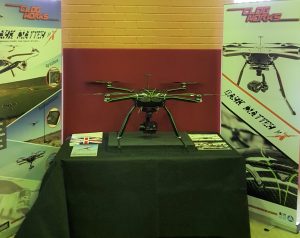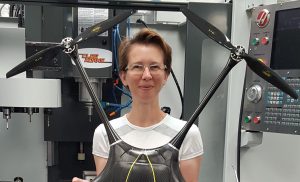|


|

 ARPAS-UK is sad to hear the news that Norman Lamb, Liberal MP for North Norfolk, is to step down at the next election.
ARPAS-UK is sad to hear the news that Norman Lamb, Liberal MP for North Norfolk, is to step down at the next election.Drones will be used to search for people lost at sea while cracking down on pollution from ships.
A network of small unmanned devices will eventually be stationed on the coastline to provide a rapid response unit that will be quicker and cheaper to deploy than helicopters.
The Maritime and Coastguard Agency (MCA) said a £1 million trial of the technology would be launched by the end of the year with a view to expanding its use early into the next decade.
As part of the trial drones would be expected to patrol an area up to 11 miles off the coast, focusing primarily on search and rescue and pollution control operations. The devices could be manually operated or run in automated mode, it said.
A document published by the agency said that other government departments may also use the technology, including Border Force. It suggests that drones could be used to spot boats being used to illegally carry migrants to the UK from France and Belgium.
The suggestion came as 37 migrants were intercepted off the south coast of England over the weekend. Three separate incidents were recorded, including one in which 20 people were found in a dinghy near Dungeness, Kent, on Saturday. A total of 966 people, including 89 children, are believed to have crossed the Channel in small boats in the past nine months.
However, the technology is likely to prove difficult to implement on a large scale because of the dangers of using drones beyond the line of sight of their human operator. It is against the law to fly drones out of sight in busy airspace shared by passenger planes and other aircraft.
The MCA has published a document inviting companies to tender for a £990,000 trial of drone technology. The contract will be awarded in October and a trial is expected to run until autumn next year.
The agency said that at least one drone would initially be employed, with the location of the trial yet to be decided. It said that a search area of up to 11.5 miles would be used, with drones expected to be able to remain in the skies for more than three hours. The government has set aside £18.3 million for the future deployment of drone technology around the coastline after the trial.
The MCA insisted that helicopters would be retained but using drones would “improve the speed of response, reduce costs and perform automated functions which would add to search coverage”. A spokeswoman said: “We see a role for drones in the work that we do. Our ambition is to unlock drones’ potential.”
Article by Graeme Paton for The Times
August 5th, 2019

Victoria Atherton, Derbyshire Police’s first female drone pilot, has said she wants to inspire others and fight crime.

She was recently deployed to the Whaley Bridge dam incident, which, following severe damage last week, led to around 1,500 residents being evacuated.
PC Atherton and the UAV team used a range of DJI drones to provide close-up images of the dam and to patrol the exclusion zone to monitor people’s homes, amid reports of burglaries in the area.
She commented: “Personally, I think the best way to encourage women to get involved is to support each other. The future of aviation appears to be heading in the direction of unmanned aircraft and it’s important that men and women are equally represented in this field.”
As the Heliguy report describes and in her own words, Atherton’s relationship with aviation has been ‘turbulent’ and led to her successfully fighting a gender discrimination case against a fixed-wing flying school along the way.
She added: “As flying drones is in its infancy, it’s important that women take advantage of the opportunities available in order to avoid a gender gap in the future. For me, it certainly feels like an achievement to be labelled as the first female drone pilot in the Derbyshire Constabulary, however, I think it’s more important to ensure that I am not the last.”
By Commercial Drone Professional
12 August 2019

As a Director of a young UAV manufacturer company, my role is diverse and I love the fact that I learn new things every day. This week I mostly focused on Business Development.
Clogworks Technologies was delighted to be invited at the National Drone Emergency Services Practitioners day in Lancashire on the 11th of July. The day was really well organised and attended with 8 manufacturers presenting their systems. I always tailor each presentation to the audience’s requirements known at the time, and like to do it well in advance as I can then adjust the message/ content of what I want to convey over a week or so. There is always something that can be added or improved!

At the same time, there was a hard deadline to submit an international tender. Luckily, it was a repeat invitation to bid so most of the work had already been done and I mostly only needed to double check all the information and submit it in the required format.
I seem to have spent an awful lot of time battling with HS Codes and packing lists too this week, one of these things!
As part of manufacture training, Clogworks Technologies offer face-to-face training on the UAVs, accessories and GCS app software use. However, for customers abroad, this is not always an option, so instruction manuals become very important. At present, I am well into the writing up of a new manual for one of our accessories.

Early July was also the time when we received two answers and feedbacks from InnovateUK proposals submitted a few months back. Unfortunately, both were unsuccessful and it is always disappointing, however, we try to draw lessons from it and use the feedback as best as we can. Some of it may be on the consortium, the approach taken or the complexity of the projects themselves.
A couple of customers’ project reviews took place this week and help plan the milestones delivery schedule, especially if requirements are adjusted as projects develop.
Of course, there are also daily talks about the business strategy, checking customers’ quotes and staying on top of the industry progress and legislation. We also are very keen to identify what partners/ products could be of interest for further development and this requires constant monitoring of the industry.
From a family point of view, running your own business means you have flexibility on the hours you work, and this week was sports day at school for my 6 and 8 year old, so I managed to catch a couple of very competitive races and made my kids very happy! I also organised a roller skate birthday party and that was fun!
And when I have time, I like to fly a drone too!

Contact:
The General Directorate of Traffic (DGT) said it had 11 drones, three of which had been certified by the Spanish Meteorological Centre to gather evidence.
The remote-controlled aircraft will monitor areas where accidents frequently happen and roads used by large numbers of cyclists, motorcyclists and pedestrians. They will also be used at large events that cause heavy traffic and to assist the emergency services.
Photographic evidence gathered by the certified drones will be sent to civil guard traffic officers as soon as offences are committed, or relayed later to the relevant authorities.
“In the early days of August, the three [certified] drones will be in the Canaries, where we don’t have helicopters, so we can cover things,” said a DGT spokesman. “After that they’ll be sent wherever they’re needed. There’s no set plan yet. The other eight will also be deployed wherever they’re needed depending on traffic flows.”
The DGT said it was in the process of buying 20 more drones to be used for patrols and traffic control.
It expects 47m long-distance trips will be made as Spain enters the summer holiday period. On Wednesday and Thursday of this week alone, the DGT estimates 2.9m long journeys will be undertaken – twice the average for the summer period.
“Although 1 August is still the day when thousands of people begin their holidays, recent years have seen people choosing to break up their vacations and enjoy shorter periods away,” the directorate said. “That’s why the DGT will be deploying special traffic teams every weekend during the summer to assist drivers with their needs.”